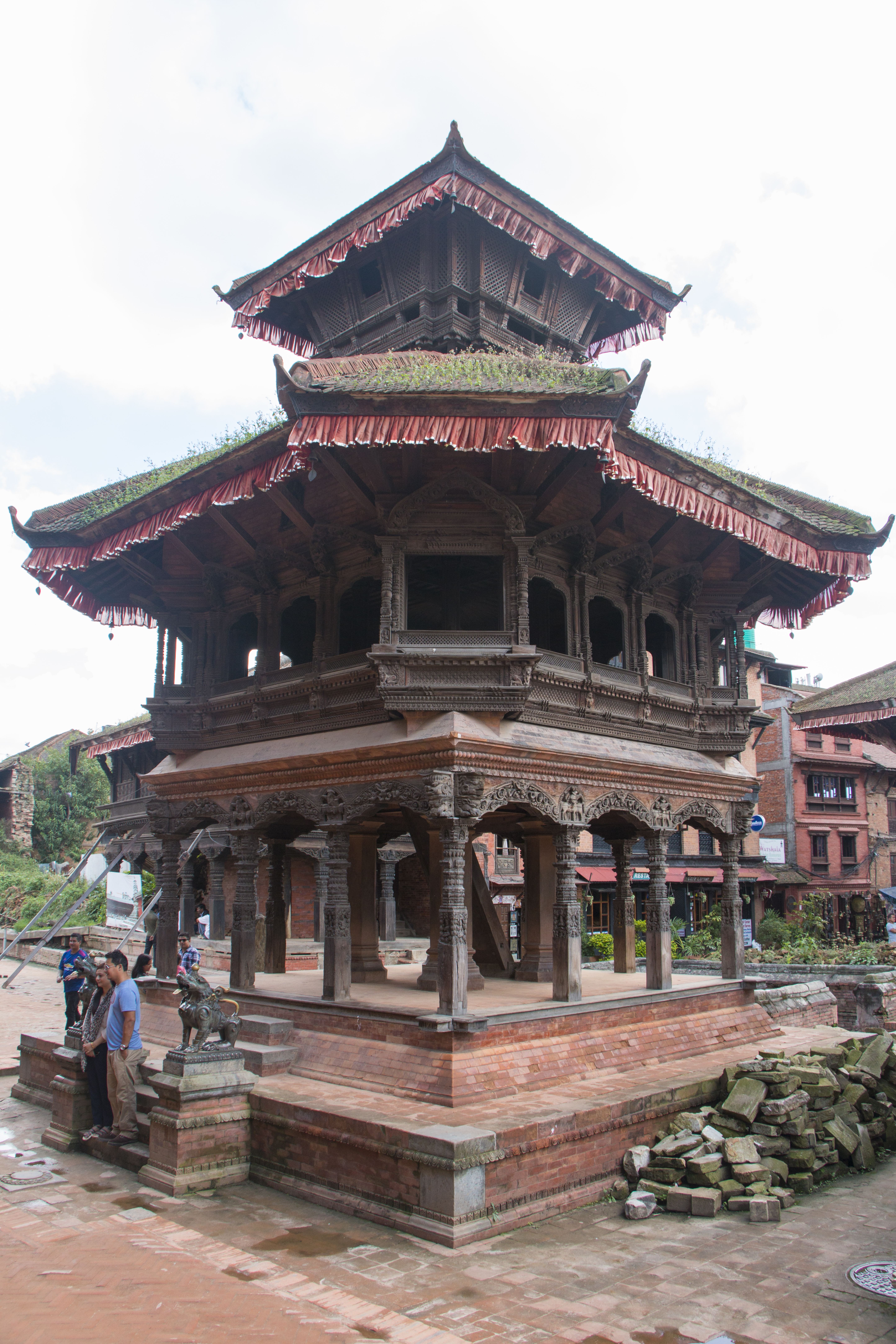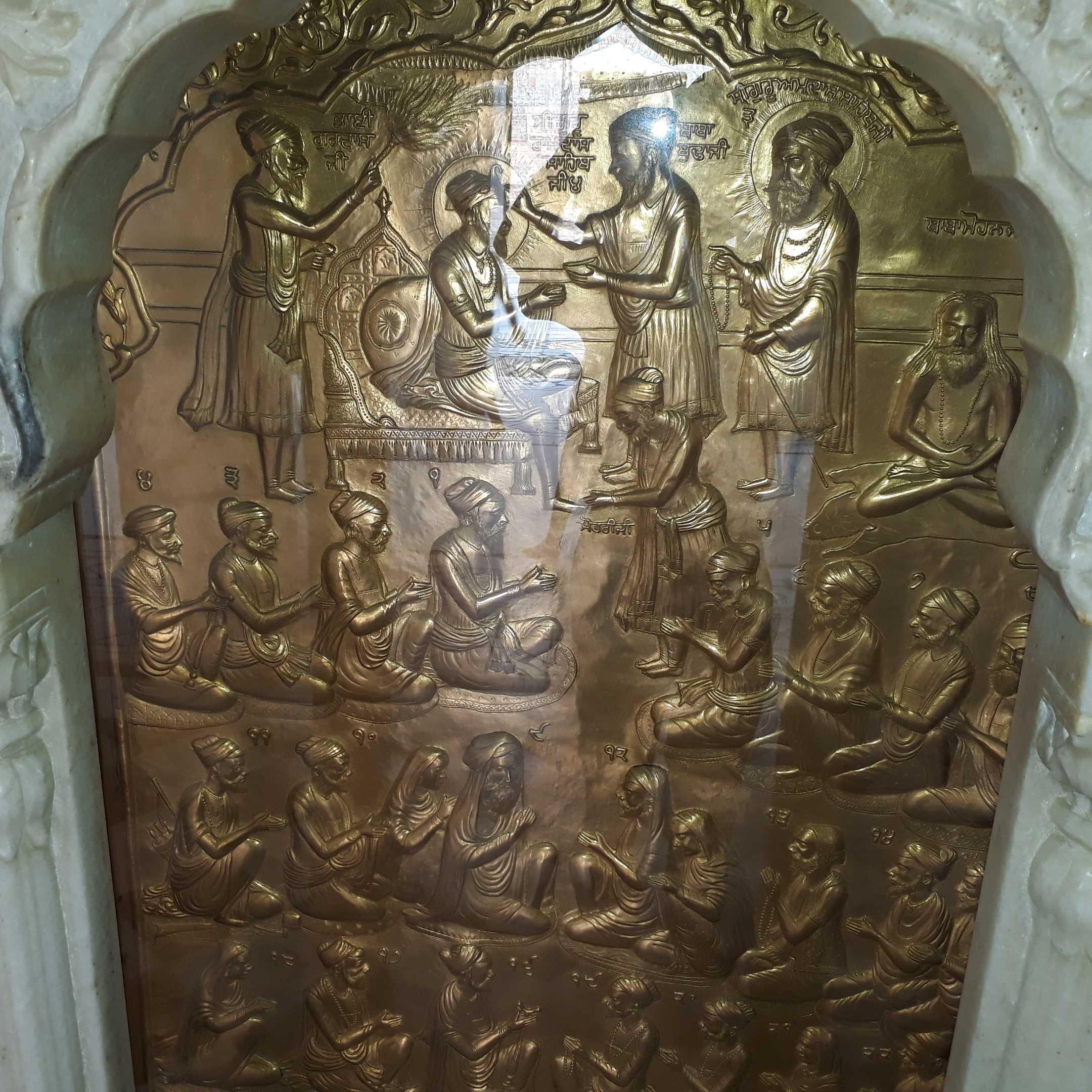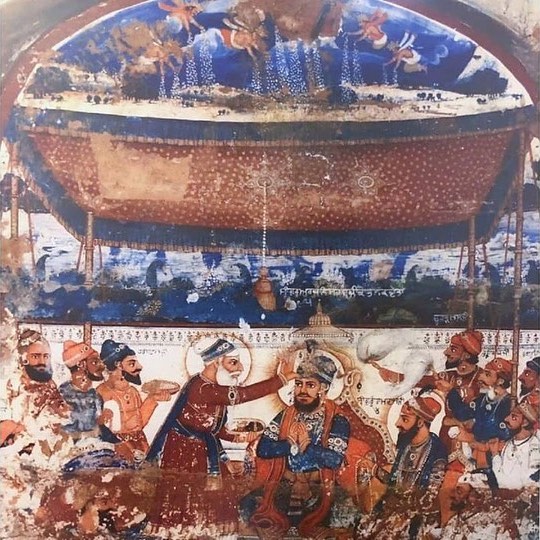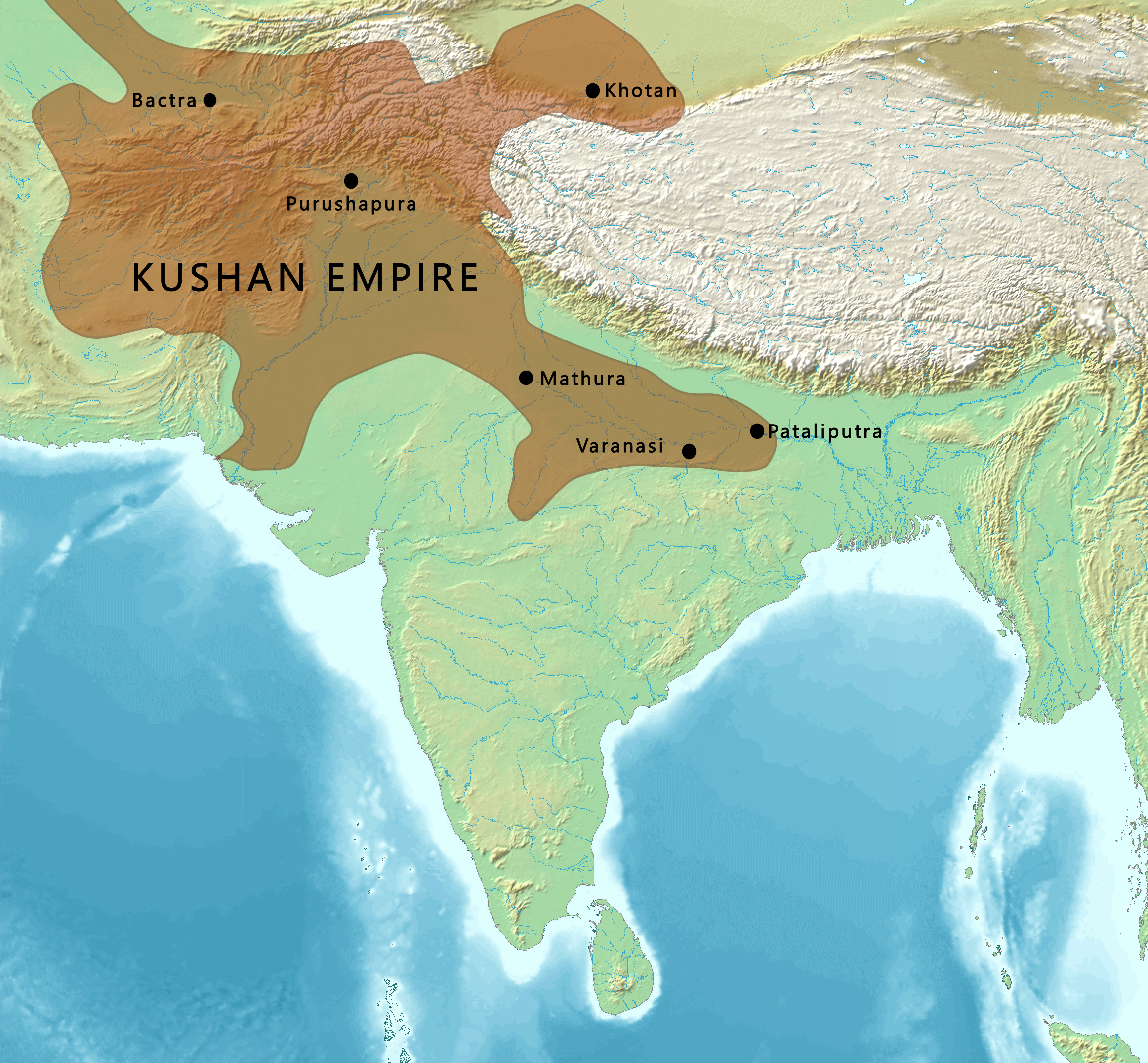|
Masand
A masand was a representative, religious preacher, and tithe collector in Sikhism. They were an officially appointed missionary minister representing the Sikh Guru, who baptized conversions to Sikhism, and collected '' dasvandh'' (tithe) as an offering to the Sikh community and religious establishment. A masand forwarded the collected amount to the Sikh guru. The masand has been described as being territorial deputies or vicars.Kothari, Rita & Thadhani, Jasbirkaur. (2016). ''Sindhi Sikhs in India: The Missing People''. South Asia: Journal of South Asian Studies. 39. 1-18. 10.1080/00856401.2016.1233716. https://www.researchgate.net/publication/309276179_Sindhi_Sikhs_in_India_The_Missing_People The appointing of a masand conferred a distinct and unique Sikh status upon specific areas, occasions, and rituals. Etymology The word masand (Punjabi: ਮਸੰਦ) is an adaptation of the Persian term 'masnad' (Punjabi: ਮਸਨਦ), which refers to 'a seat' that is at a lower level th ... [...More Info...] [...Related Items...] OR: [Wikipedia] [Google] [Baidu] |
Dharamshala (type Of Building)
A dharamshala, also written as dharmashala, is a public resthouse or shelter in the Indian subcontinent. It also refers to Sikh places of worship before the introduction of Gurdwaras. Just as sarai are for travellers and caravans, dharamshalas are built for religious travellers at pilgrimage sites. In Nepal there are dharamshalas especially built for pilgrims as well as dharamshalas for locals. Etymology ''Dharamshala'' (Devanagari: धर्मशाला; ITRANS: Dharmashaalaa; IAST: Dharmaśālā) is a word (derived from Sanskrit) that is a compound of ''dharma'' (धर्म) and ''shālā'' (शाला). A loose translation into English would be 'spiritual dwelling' or, more loosely, 'sanctuary'. Rendering a precise literal translation into English is problematic due to the vast and conceptually rich semantic field of the word ''dharma'', and the cultural aspect of India. In common Hindu usage, the word ''dharamshala'' refers to a shelter or rest house for spiritual ... [...More Info...] [...Related Items...] OR: [Wikipedia] [Google] [Baidu] |
Manji (Sikhism)
A Manji (Punjabi: ਮੰਜੀ ਪ੍ਰਥਾ ) was a Sikh religious administrative unit, similar to a parish or diocese, for the propagation of Sikhism. It was part of the Sikh missionary administrative organization founded by Guru Amar Das, the third Guru of Sikhism. Etymology The word ''Manji'' or ''Manja'' literally means a cot (taken as the ''seat of authority'' in this context). History Origin Guru Nanak would arrange early Sikh followers into various ''sangat'' (congregations) or parishes and instructed them to erect a '' dharamsal'' dedicated to spreading their Guru's message and teachings in their local area. Sangatia Sangatia (also spelt as ''Sangtias'') were head leaders from the local Sikh congregation (''sangat'') who arose as local leaders based upon personal piety and merit. Anyone could arise to become a Sangatia as there was no established priestly or clergy-class in Sikhism, as long as they were well-learnt and dedicated enough to the religion. Mos ... [...More Info...] [...Related Items...] OR: [Wikipedia] [Google] [Baidu] |
Guru Ram Das
Guru Ram Das (Gurmukhi: ਗੁਰੂ ਰਾਮ ਦਾਸ, pronunciation: ; 24 September 1534 – 1 September 1581), sometimes spelled as Guru Ramdas, was the fourth of the ten Sikh gurus. He was born to a family based in Lahore, who named him Bhai Jetha. He was orphaned at age seven; and thereafter grew up with his maternal grandmother in a village. At age 12, Bhai Jetha and his grandmother moved to Goindwal, Goindval, where they met Guru Amar Das, the third leader of Sikhism. The boy accepted the guru as his mentor, served him, and eventually joined his family by marrying his daughter. When it came time for Guru Amar Das to name his successor, he passed over his own sons and chose Bhai Jetha, citing his exemplary service, selfless devotion, and unquestioning obedience. Renamed Ram Das ("slave of God"), Bhai Jetha became the fourth Guru of Sikhism in 1574. He faced hostility from the sons of Guru Amar Das, and shifted his official base to lands identified by Guru Ama ... [...More Info...] [...Related Items...] OR: [Wikipedia] [Google] [Baidu] |
Dasvandh
Dasvandh (, also translated as 'tithe', alternatively spelt as daswandh) is the one tenth part (or 10%) of one's income that one should donate, both financially (as a tithe) and directly in the form of '' seva'', according to Sikh principles. Overview It falls into Guru Nanak Dev's concepts of '' Vand Chhako'' and ''Kirat karo''. The practice was followed during the period of Guru Arjan Dev and many Sikhs still continue to carry out the practice in the present-day. The concept of dasvandh was implicit in Guru Nanak's own line: "''ghali khai kichhu hathhu dei, Nanak rahu pachhanahi sei''—He alone, O Nanak, knoweth the way who eats out of what he earneth by his honest labour and yet shareth part of it with others" (GG, 1245). The idea of sharing and giving was nourished by the institutions of sangat (holy congregation) and langar (community kitchen) the Guru had established. Sikhs believe that whatever one gives in charity, they shall receive back many fold to their benefi ... [...More Info...] [...Related Items...] OR: [Wikipedia] [Google] [Baidu] |
Guru Arjan
Guru Arjan (Gurmukhi: ਗੁਰੂ ਅਰਜਨ, pronunciation: ; 15 April 1563 – 30 May 1606) was the fifth of the ten total Sikh Gurus. He compiled the first official edition of the Sikh scripture called the Adi Granth, which later expanded into the Guru Granth Sahib. He is regarded as the first of the two Gurus martyred in the Sikh faith. Guru Arjan was born in Goindval, in the Punjab, the youngest son of Bhai Jetha, who later became Guru Ram Das, and Mata Bhani, the daughter of Guru Amar Das. He completed the construction of the Darbar Sahib at Amritsar, after the fourth Sikh Guru founded the town and built a sarovar. Arjan compiled the hymns of previous Gurus and of other saints into Adi Granth, the first edition of the Sikh scripture, and installed it in the Harimandir Sahib. Guru Arjan reorganized the masand system initiated by Guru Ram Das, by suggesting that the Sikhs donate, if possible, one-tenth of their income, goods or service to the Sikh organization ... [...More Info...] [...Related Items...] OR: [Wikipedia] [Google] [Baidu] |
Gurdwara
A gurdwara or gurudwara () is a place of assembly and place of worship, worship in Sikhism, but its normal meaning is "place of guru" or "home of guru". Sikhism, Sikhs also refer to gurdwaras as ''Gurdwara Sahib''. People from all faiths and religions are welcomed in gurdwaras. Each gurdwara has a ''Darbar Sahib Hall, Darbar Sahib'' where the Guru Granth Sahib is placed on a (an elevated throne) in a prominent central position. Any congregant (sometimes with specialized training, in which case they are known by the term granthi) may recite, sing, and explain the verses from the Guru Granth Sahib, in the presence of the rest of the congregation. All gurdwaras have a hall, where people can eat free lacto-vegetarian food served by volunteers at the gurdwara. They may also have a medical facility room, library, nursery, classroom, meeting rooms, playground, sports ground, a gift shop, and finally a repair shop. A gurdwara can be identified from a distance by tall flagpoles bearing ... [...More Info...] [...Related Items...] OR: [Wikipedia] [Google] [Baidu] |
Pashtuns
Pashtuns (, , ; ;), also known as Pakhtuns, or Pathans, are an Iranian peoples, Iranic ethnic group primarily residing in southern and eastern Afghanistan and northwestern Pakistan. They were historically also referred to as Afghan (ethnonym), Afghans until 1964 after the term's meaning had become a demonym for all citizens of Afghanistan regardless of their ethnic groups in Afghanistan, ethnic group. The Pashtuns speak the Pashto, Pashto language, which belongs to the Eastern Iranian languages, Eastern Iranian branch of the Iranian languages, Iranian language family. Additionally, Dari serves as the second language of Pashtuns in Afghanistan, while those in Pakistan speak Urdu and English. In India, the majority of those of Pashtun descent have lost the ability to speak Pashto and instead speak Hindi and other regional languages. There are an estimated 350–400 Pashtun tribes, Pashtun tribes and clans with a Theories of Pashtun origin, variety of origin theories. In 2021 ... [...More Info...] [...Related Items...] OR: [Wikipedia] [Google] [Baidu] |
Kabul
Kabul is the capital and largest city of Afghanistan. Located in the eastern half of the country, it is also a municipality, forming part of the Kabul Province. The city is divided for administration into #Districts, 22 municipal districts. A 2025 estimate puts the city's population at 7.175 million. In contemporary times, Kabul has served as Afghanistan's political, cultural and economical center. Rapid urbanisation has made it the country's primate city and one of the largest cities in the world. The modern-day city of Kabul is located high in a narrow valley in the Hindu Kush mountain range, and is bounded by the Kabul River. At an elevation of , it is one of the List of capital cities by elevation, highest capital cities in the world. The center of the city contains its old neighborhoods, including the areas of Khashti Bridge, Khabgah, Kahforoshi, Saraji, Chandavel, Shorbazar, Deh-Afghanan and Ghaderdiwane. Kabul is said to be over 3,500 years old, and was mentioned at the ... [...More Info...] [...Related Items...] OR: [Wikipedia] [Google] [Baidu] |
Northeast India
Northeast India, officially the North Eastern Region (NER), is the easternmost region of India representing both a geographic and political Administrative divisions of India, administrative division of the country. It comprises eight States and union territories of India, states—Arunachal Pradesh, Assam, Manipur, Meghalaya, Mizoram, Nagaland and Tripura (commonly known as the "Seven Sisters"), and the "brother" state of Sikkim. The region shares an international border of 5,182 kilometres (3,220 mi) (about 99 per cent of its total geographical boundary) with several neighbouring countries – it borders China to the north, Myanmar to the east, Bangladesh to the south-west, Nepal to the west, and Bhutan to the north-west. It comprises an area of , almost 8 per cent of that of India. The Siliguri Corridor connects the region to the Mainland India, rest of mainland India. The states of North Eastern Region are officially recognised under the North Eastern Council (NEC), co ... [...More Info...] [...Related Items...] OR: [Wikipedia] [Google] [Baidu] |
South India
South India, also known as Southern India or Peninsular India, is the southern part of the Deccan Peninsula in India encompassing the states of Andhra Pradesh, Karnataka, Kerala, Tamil Nadu and Telangana as well as the union territories of Lakshadweep and Puducherry, occupying 19.31% of India's area () and 20% of India's population. It is bound by the Bay of Bengal in the east, the Arabian Sea in the west and the Indian Ocean in the south. The geography of the region is diverse, with two mountain ranges, the Western and Eastern Ghats, bordering the plateau heartland. The Godavari, Krishna, Kaveri, Penna, Tungabhadra and Vaigai rivers are important non-perennial sources of water. Chennai, Bengaluru, Hyderabad, Coimbatore and Kochi are the largest urban areas in the region. The majority of the people in South India speak at least one of the four major Dravidian languages: Telugu, Tamil, Kannada and Malayalam. During its history, a number of dynastic kingdoms ruled ove ... [...More Info...] [...Related Items...] OR: [Wikipedia] [Google] [Baidu] |
Aurangzeb
Alamgir I (Muhi al-Din Muhammad; 3 November 1618 – 3 March 1707), commonly known by the title Aurangzeb, also called Aurangzeb the Conqueror, was the sixth Mughal emperors, Mughal emperor, reigning from 1658 until his death in 1707, becoming the second longest-ruling emperor of Hindustan (48 years and 7 months). Under his reign, the Mughal Empire reached its greatest extent, with territory spanning nearly the entirety of the Indian subcontinent. Aurangzeb and the Mughals belonged to a branch of the Timurid dynasty. He held administrative and military posts under his father Shah Jahan () and gained recognition as an accomplished military commander. Aurangzeb served as the viceroy of the Viceroy of the Deccan, Deccan in 1636–1637 and the governor of Gujarat under Mughal Empire, Gujarat in 1645–1647. He jointly administered the provinces of Subah of Multan, Multan and Sind State, Sindh in 1648–1652 and continued expeditions into the neighboring Safavid Iran, Safavid ter ... [...More Info...] [...Related Items...] OR: [Wikipedia] [Google] [Baidu] |







